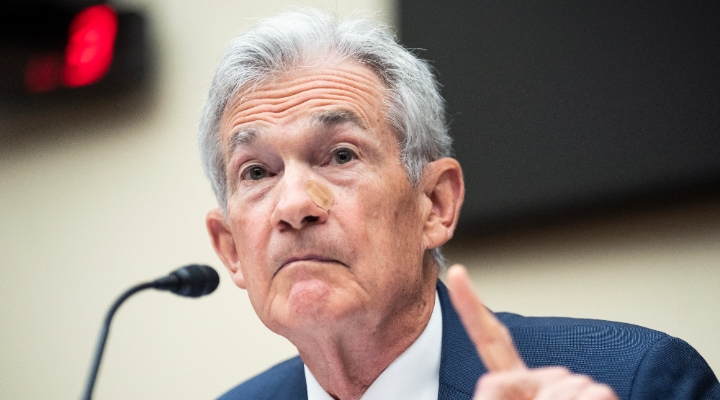
The January US jobs report showed the opposite of what many investors and economists had expected: instead of an economy heading toward a recession, the job market carried on at a confoundingly strong pace.
Despite mounting technology company layoffs and other signs of weakening in interest-rate-sensitive portions of the economy, strong job growth could mean the Federal Reserve will continue raising interest rates and hold them at higher levels longer, rather than the pause that markets had been increasingly expecting. In recent weeks, those hopes have led both stocks and bonds to strong rallies.
Payroll numbers for January showed the economy adding 517,000 new jobs, an increase that was well above economists’ forecasts. Meanwhile, the unemployment rate clocked in at its lowest level in over 50 years. Wages rose slightly, hand in hand with a growing labor supply that cooled any wage pressures. The month’s report came with revisions to the past two years’ data, adding to the complicated, surprising picture.
“If job growth is indeed as strong as the latest data suggests, then it presents a puzzle in light of other data showing a slowdown in economic activity, as well as widespread expectations of slow growth – and perhaps even a recession – in 2023,” says Morningstar’s chief economist Preston Caldwell.
Caldwell says that either jobs growth is being overestimated, economic growth is being underestimated, businesses are hiring aggressively into an imminent economic slowdown, or a mix of all three. “And if businesses really are hiring aggressively ahead of an economic slowdown, then business profits are about to take a nosedive, which will likely lead eventually to reduced hiring and layoffs,” he says.
“Today’s report should incrementally push the Fed to a tighter monetary policy stance,” says Caldwell.
The January jobs report from the Bureau of Labor Statistics showed total nonfarm payrolls rose by 517,000, well above the average monthly gain of 401,000 in 2022, and much higher than consensus expectations from FactSet for January jobs growth of roughly 190,000.
Gains in hiring came across the board, led by leisure and hospitality, professional and business services, and healthcare.
For the three-month moving average, payrolls have grown at a 2.8% annualised rate. “That rate of job growth is more consistent with an economic boom than an incipient recession,” Caldwell says. “We can still detect a deceleration in job growth over the past year, but it’s been very gradual.”
The unemployment rate ticked down to 3.4% from 3.5% in December. The unemployment rate has held relatively steady over the past year. From March 2022 through December, the rate ranged between 3.5% and 3.7%.
But with the January decline to 3.4%, the unemployment rate slipped to its lowest level since 1969.
Within the jobs report, leisure and hospitality jobs rose 128,000 in January, above the average of 89,000 jobs per month in 2022. Employment in leisure and hospitality is still 2.9% below its prepandemic February 2020 level. Continued strong growth in service-sector employment is a potential worrying point for the Fed, economists say, as a tight labor market in those industries may be more prone to seeing wage inflation that would spill over into the broader economy.
Construction employment increased by 25,000 jobs in January, led by job gains for specialty trade contractors. Economists have been surprised by continued strength in construction hiring given growing weakness in real estate resulting from the Fed’s interest-rate increases.
“The job growth data does point to a much stronger economy than anticipated, but in terms of wages, the economy isn’t looking overheated,” Caldwell says.
In January, average hourly wages rose by 0.3% to $33.03. Wage growth has averaged a 4.6% annual rate in the last three months, according to Caldwell. He says that number is slightly above normal levels, but still consistent with inflation at a relatively mild 3% long-term rise in prices.
“Despite proclamations of a ‘labor shortage’, labor supply is expanding almost hand-in-hand with business’ hiring needs,” Caldwell says. That means that businesses aren’t as pressured by a need to entice people into the workforce by raising wages. Moreover, he says, “Further slowdown in labor demand and job growth in 2023 should ease wage growth further.”
Fed Pivot Delayed?
For investors, who increasingly have been looking for the Fed to halt its interest-rate increases by the end of the year, the strong jobs data throws a wrench into that outlook.
“There was a good possibility of a pause in rate hikes, but now it’s much more likely that the Fed will hike again,” Caldwell says.
After the report’s release, market expectations held steady for a 0.25-percentage-point increase in the federal-funds rate at the March Fed meeting. According to the CME FedWatch Tool, a quarter-point increase in the funds rate target to 4.75-5.00 is given a 97% likelihood, up from 83% before the report’s release.
But further out, the jobs data prompted a shift in expectations for the Fed raising rates higher and holding them in place longer.
For the May meeting, odds are now seen in favour of another quarter-point increase, which would take the funds rate to a target rate of 5%-5.25%. And while bond futures suggest the Fed is expected to lower rates by the end of 2023, those cuts are now pushed back to the fourth quarter. The majority of market participants expect the fed-funds rate to land at 4.75%; a month ago, most expected the rate to fall to 4.50% by December.
The January jobs report release also showed large upward revisions to historical data on nonfarm payroll growth for 2021 and 2022.
“Altogether, this paints a picture of a postpandemic jobs recovery that has been exceedingly strong, with January 2023 nonfarm employment at 2% above prepandemic levels,” Caldwell says.
These revisions were part of the regular annual updates, where the U.S. Department of Labor supplements the original reporting with higher-quality data from unemployment insurance records and recalibrate its historical estimates.
The new data shows December nonfarm payroll employment was 800,000 higher than previously reported.
However, Caldwell says investors shouldn’t extrapolate those historical revisions going forward. “It’s quite possible that next year’s benchmark revisions will show job growth in late 2022 and early 2023 was much weaker than currently reported,” he says. “One plausible reason is elevated levels of business closure.” The BLS uses a statistical model to estimate rates of business openings and closures, which is liable to be wrong at key turning points in the business cycle, he says.
Caldwell notes that while these data issues may seem arcane, they are important to keep in mind as we evaluate the jobs data. “If the Fed is evaluating the economy using flawed data, it may set monetary policy at inappropriate levels. In many recessions – including 2008 – both gross domestic product and employment ended up later being revised downward.” Caldwell says that Fed is aware of this tendency, which is why it uses a diverse array of data to evaluate the state of the economy rather than relying on a single report.







.jpg)




















